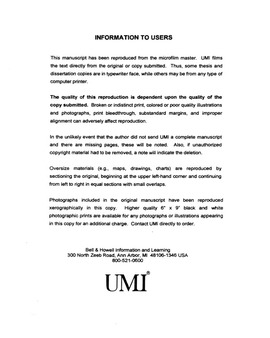| dc.contributor.advisor | Cruz, Joao R., | en_US |
| dc.contributor.author | Xing, Helen Jun. | en_US |
| dc.date.accessioned | 2013-08-16T12:18:09Z | |
| dc.date.available | 2013-08-16T12:18:09Z | |
| dc.date.issued | 2001 | en_US |
| dc.identifier.uri | https://hdl.handle.net/11244/295 | |
| dc.description.abstract | Also, various coding techniques are compared for the forward link of IS-2000 systems in this dissertation. The possible application of low-density parity-check (LDPC) coding in CDMA systems is investigated. Its performance is compared with convolutional and turbo coding. Both LDPC and turbo coding outperform convolutional coding when the data rates are high. However, randomly generated LDPC codes cannot achieve as much gain over convolutional codes as turbo codes. Although LDPC codes require much less decoding complexity, they have larger memory requirements. | en_US |
| dc.description.abstract | Performance evaluation in terms of bit error rate (BER) for a multicell environment is also done analytically and numerically in the latter part of this dissertation. The multiple access interfering signals coming upon the desired vehicle comprise of path loss, correlated log-normal shadowing and Rayleigh fast fading. With the help of the efficient combined probability density function (PDF) method, the BER expressions incorporating Viterbi's and Mawira's shadowing models and sectorized antennas with finite front-to-back ratios are derived and numerically evaluated. | en_US |
| dc.description.abstract | The performance of cellular CDMA systems is evaluated using both link level computer simulations and multicell numerical analysis methods. As two of the most commonly used techniques for performance enhancement of CDMA systems, beamforming and coding techniques are investigated. | en_US |
| dc.description.abstract | As far as antenna systems are concerned, this dissertation compares the performance between adaptive antenna arrays and fixed multibeam techniques for the reverse link of IS-95 systems. It is found that adaptive beamforming performs best when the number of interferers is less than the number of antenna elements. However, when the number of interferers is large, fixed multibeam techniques, which can be more easily implemented in the practical world, outperform adaptive antenna arrays when the speeds of vehicles are higher. | en_US |
| dc.format.extent | xiii, 95 leaves : | en_US |
| dc.subject | Code division multiple access. | en_US |
| dc.subject | Antenna arrays. | en_US |
| dc.subject | Engineering, Electronics and Electrical. | en_US |
| dc.subject | Signal processing Digital techniques. | en_US |
| dc.title | Performance evaluation of CDMA systems. | en_US |
| dc.type | Thesis | en_US |
| dc.thesis.degree | Ph.D. | en_US |
| dc.thesis.degreeDiscipline | School of Electrical and Computer Engineering | en_US |
| dc.note | Source: Dissertation Abstracts International, Volume: 62-02, Section: B, page: 1009. | en_US |
| dc.note | Major Professor: Joao R. Cruz. | en_US |
| ou.identifier | (UMI)AAI3004888 | en_US |
| ou.group | College of Engineering::School of Electrical and Computer Engineering | |
